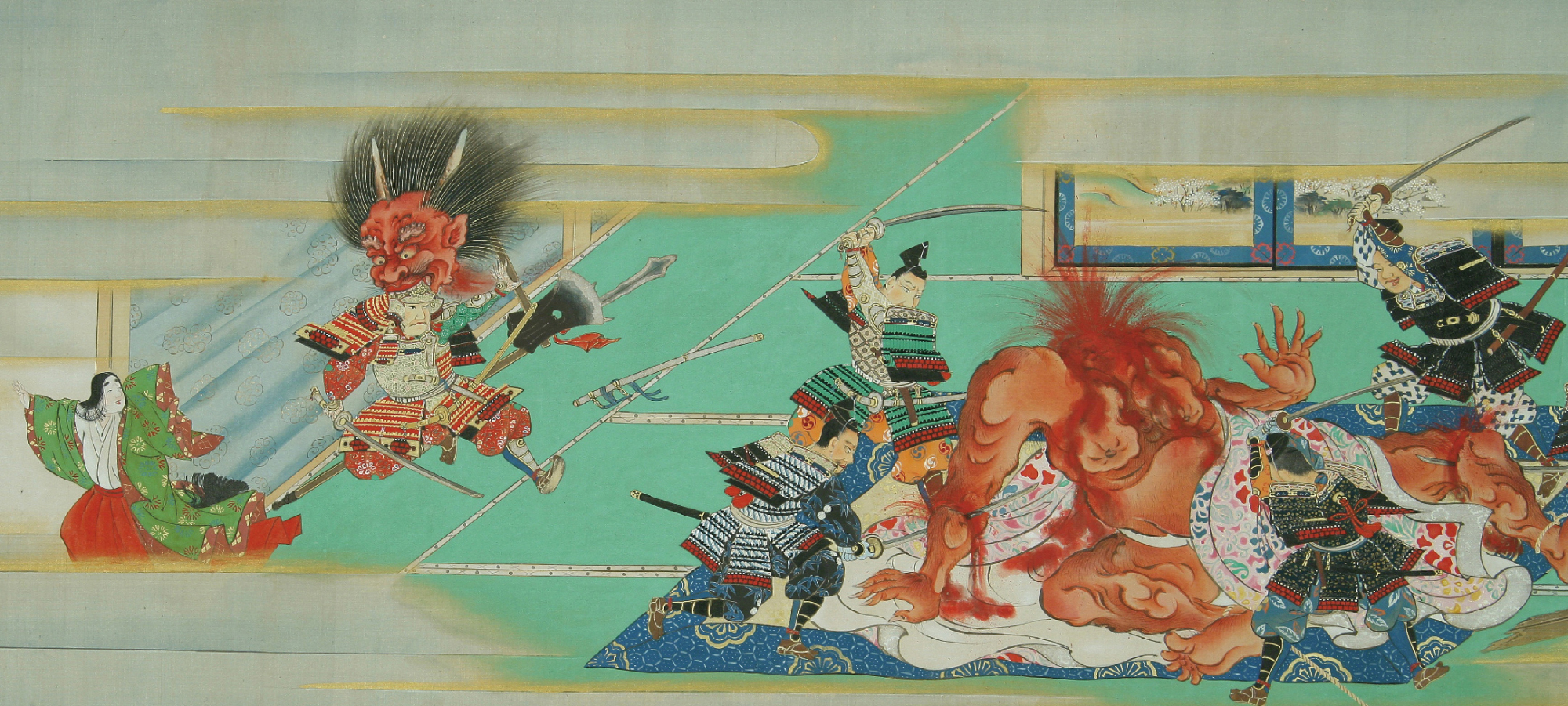"Shutendoji Monogatari," ("The Tale of the Drunken Demon"), is one of Japan's most popular folk tales, dating back to the 14th century. Beyond its depictions in pictures and scrolls, it features in kabuki and noh plays as well as modern-day comic books that highlight its humorous themes. The story has also served a didactic purpose, communicating ethics and religious beliefs, and providing important moral lessons about the follies of human nature.
The demon, Shutendoji, enters the world as the offspring of a Buddhist deity and a human woman. Early in life he develops an unhealthy fondness for liquor, and eventually, after a failed attempt to reform him at a Buddhist monastery, his true nature emerges. He becomes a demon and takes refuge in a distant mountain castle. His subsequent life of evil is punctuated by his assistants' sorties into the capital to kidnap beautiful maidens.
Tokyo's Nezu Museum, in celebration of the new year, is exhibiting picture scrolls of this tale by three artists dating from the 16th to the 19th century. The highlight of the show is an eight-scroll depiction of the story by Sumiyoshi Hironao (c. 1781-1863). The eight scrolls, part of the museum's permanent collection, each measure 10 meters long, making this the most detailed set of Shutendoji illustrations in existence. This marks the first time that the museum has displayed the scrolls in their entirety.



















With your current subscription plan you can comment on stories. However, before writing your first comment, please create a display name in the Profile section of your subscriber account page.